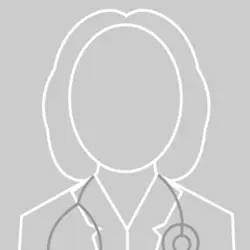Precocious Puberty
"In the treatment of precocious puberty, the psychological circumstances of the child, as well as his or her age, must be taken into account".
DR. CRISTINA AZCONA
SPECIALIST. PEDIATRICS DEPARTMENT

What is precocious puberty?
Precocious puberty is defined as the appearance of secondary sexual characteristics (breast development in girls and testicular enlargement in boys, pubic hair and armpit hair) before the age of 8 years in girls and before the age of 9 years in boys.
If they appear between the ages of 8 and 9, it is called early puberty, which is the lower part of the normal distribution.
In the physiological development of the girl, the mammary bud usually appears first, followed by pubic hair (although in one out of every six girls this appears earlier), then axillary hair and finally menarche (first period).
However, this order can be altered, especially in cases where precocious puberty does not depend on the secretion of pituitary hormones (central or gondatropin-dependent precocious puberty), but is triggered by autonomous ovarian oestrogen production (peripheral or gonadotropin-independent precocious puberty).

What are the symptoms of precocious puberty?
Some of the most common symptoms of precocious puberty are as follows:
The progression of the clinical picture leads to accelerated bone maturation and therefore to early closure of growth plates and low final height and early onset of menarche (first period).
In addition, both boys and girls may experience psychological problems as they see that their development is different from that of their peers.
Most common symptoms:
- Early onset of first period
- Development of the breast bud
- Low size
Do you have any of these symptoms?
If you suspect that you have any of the above symptoms,
you should consult a medical specialist for a diagnosis.
How is precocious puberty diagnosed?
The diagnosis is made by physical examination of the child and may be complemented with hormone analyses. An X-ray of the hand will be taken to determine the degree of bone maturation.
Parents should play down the importance of the problem and explain, according to the paediatrician's instructions, why this pubertal development has occurred and how it should be treated.
How is precocious puberty treated?
In the treatment of precocious puberty, the psychological circumstances of the girl, as well as her age, must be taken into account.
The treatment for precocious puberty consists of the administration of monthly injections that block the pituitary receptors (GnRH receptors) whose function is to stimulate the secretion of hormones that stimulate the production of estrogen.
When these receptors are blocked, the production of these hormones is stopped and therefore the stimulation of the ovary by the same, achieving as a final effect the suppression of estrogens or testosterone and with it, the pubertal development.
It is necessary to evaluate if the treatment is going to be effective in improving the girl's final size, because the problem that occurs in precocious puberty is that, when the bone age is advanced, the final size can be compromised.
In the event that an organic alteration is detected that affects the pituitary gland, the appropriate treatment must be carried out.
Where do we treat it?
IN NAVARRA AND MADRID
The Department of Pediatrics
of the Clínica Universidad de Navarra
All our specialists work exclusively and, in addition, since we have all the technology in the same center, we offer the performance of tests and diagnosis in less than 72 hours.
We have a team of highly qualified professionals to attend the different specialized units: Oncopediatrics, Neuropediatrics, Endocrinopediatrics, Neonatology, etc.
Organized in specialized units
- Neonatology Area.
- Pediatric Endocrinology.
- Pediatric Cardiology.
- Pediatric Neuropediatrics.
- Digestive and pediatric nutrition.
- General and preventive pediatrics.
- Pediatric Pneumology.

Why at the Clinica?
- Comprehensive care of the child.
- Professionals who are experts in the different areas for a better diagnosis and treatment.
- Equipped with the latest technology for newborn care.


























